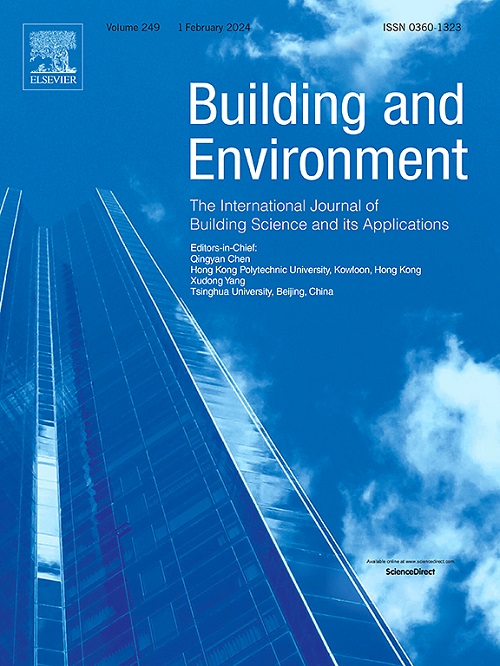在地下工作环境中居住7天的生理、心理、知觉和认知表现的演变
IF 7.1
1区 工程技术
Q1 CONSTRUCTION & BUILDING TECHNOLOGY
引用次数: 0
摘要
一些职业群体不得不长时间在地下空间工作和生活。尽管环境设计得像地上建筑,但还是有很多抱怨。因此,了解居民在这样的环境中逗留期间的反应对于改进设计至关重要。本研究探讨了人类受试者在真实的地下环境中生理、心理和认知表现的演变。在第4天发生了显著的生理变化(脉搏率、舒张压、体温)、认知表现(持续注意力、执行功能和心算能力)和睡眠状况。心理上,情绪逐渐恶化,主要表现为活力下降(ρ = -0.93)和疲劳积累(ρ = 0.82)。总情绪困扰指数与PSQI得分呈显著正相关(p <;0.001),表明较差的情绪与较差的睡眠质量有关。值得注意的是,头部区域(前额、脸颊、颈部)的皮肤温度对状态变化更为敏感,脸颊温度(从32.4±1.0°C变化到33.3±0.8°C)可能是一个潜在的生理指标。当地下环境参数保持在地上建筑推荐范围内时,对长期居住居民整体舒适度影响最大的是空间舒适度(β = 0.456, p = 0.001),其次是热舒适度(β = 0.265, p = 0.007)和空气舒适度(β = 0.228, p = 0.010)。该研究揭示了地下环境对人体健康的影响,为改进地下环境设计和利用规划提供了基础信息。本文章由计算机程序翻译,如有差异,请以英文原文为准。
Evolution of physiological, psychological, perceptual, and cognitive performance during a seven-day residence in underground working environment
Some occupational groups have to work and live in underground spaces for prolonged periods. Many complaints are raised, despite the environment being designed like above-ground buildings. Understanding the responses of residents during their stay in such an environment is therefore crucial for improving the design. This study explored the evolution of human subjects’ physiological, psychological, and cognitive performance in real underground over seven days. Significant changes in physiology (pulse rate, diastolic blood pressure, body temperature), cognitive performance (sustained attention, executive function, and mental calculation ability), and sleep conditions occurred on the 4th day. Psychologically, emotions deteriorated cumulatively, mainly manifested by a decrease in vitality (ρ = -0.93) and the accumulation of fatigue (ρ = 0.82). The Total mood Distress index showed a significantly positive correlation with PSQI scores (p < 0.001), indicating that worse mood was associated with poorer sleep quality. Notably, the skin temperatures in the head area (forehead, cheek, neck) were more sensitive to state changes, and cheek temperature (changing from 32.4 ± 1.0°C to 33.3 ± 0.8°C) could be a potential physiological indicator. With the underground environmental parameters maintained within the recommended ranges of above-ground buildings, the most substantial impact on the overall comfort of long-term residents was spatial comfort (β = 0.456, p = 0.001), followed by thermal comfort (β = 0.265, p = 0.007) and air comfort (β = 0.228, p = 0.010). This study shows the underground environment's effect on human health, providing basic information for improved environmental design and occupancy plans.
求助全文
通过发布文献求助,成功后即可免费获取论文全文。
去求助
来源期刊

Building and Environment
工程技术-工程:环境
CiteScore
12.50
自引率
23.00%
发文量
1130
审稿时长
27 days
期刊介绍:
Building and Environment, an international journal, is dedicated to publishing original research papers, comprehensive review articles, editorials, and short communications in the fields of building science, urban physics, and human interaction with the indoor and outdoor built environment. The journal emphasizes innovative technologies and knowledge verified through measurement and analysis. It covers environmental performance across various spatial scales, from cities and communities to buildings and systems, fostering collaborative, multi-disciplinary research with broader significance.
 求助内容:
求助内容: 应助结果提醒方式:
应助结果提醒方式:


